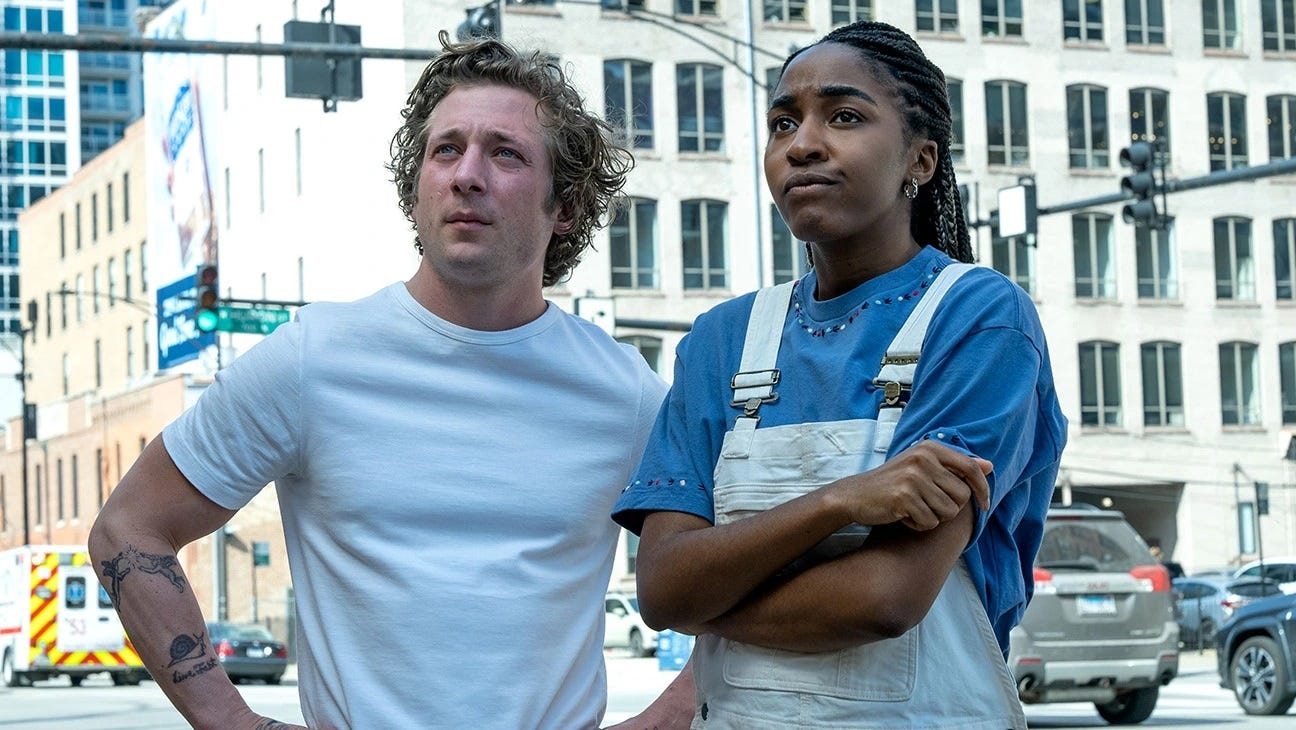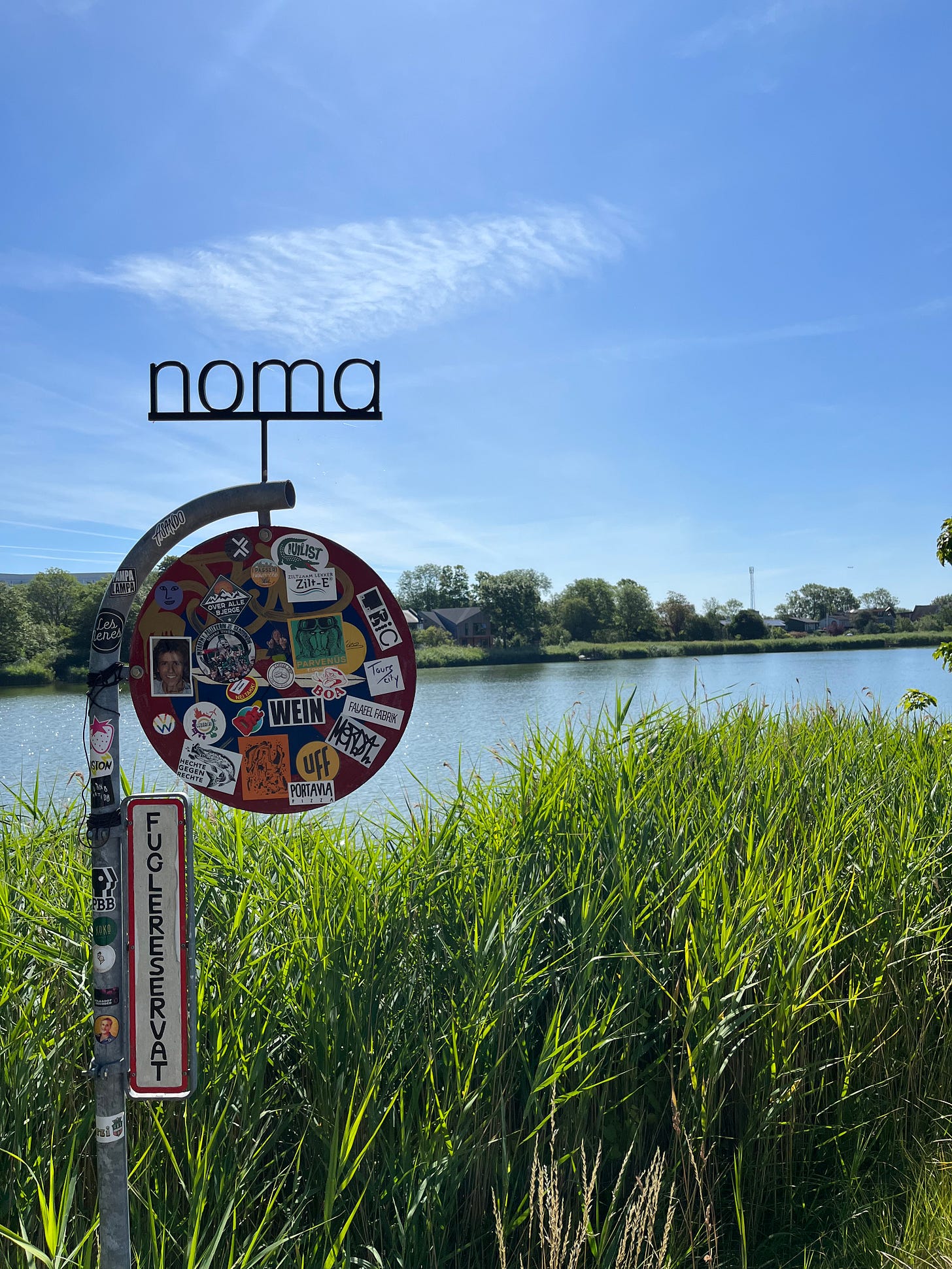no. 5 — The Michelin has lost its sex appeal
pop-ups and personality + restaurants’ new role as curators of culture
With rare exception, I’d argue most “business” books could have been essays—distilled across a handful rather than hundreds of pages. Will Guidara’s Unreasonable Hospitality is such an exception.
In it he recounts the relentless pursuit of excellence that earned Eleven Madison Park three Michelin stars and the prestigious title of World’s Best Restaurant in 2017. But importantly, Guidara shows rather than tells. The book is bursting with insights on leadership, creative culture, and customer experience that transcend the bounds of the hospitality industry.
With that said, reading about how resolutely the EMP team strove for these accolades just five years ago struck an odd chord in me. It read the same when Sydney longs for a Michelin in The Bear, albeit set in present day Chicago. There was something about these aspirational renderings of the Michelin that felt… anachronistic, as though the stars themselves are now relics of the past.
A brief history of the Michelin and the future of dining
The Michelin Guide was first created in 1900 as a marketing tactic to encourage travel and drive tire sales for the Michelin tire company. The formal three-star rating system was only introduced in 1936 (one star = worth a stop; two stars = worth a detour; three stars = worth a special journey), and it wasn’t until 2005 that the guide began reviewing New York City restaurants. (In case you were wondering.)
Officially, Michelin stars are awarded for the quality of food based on five criteria: quality of the ingredients used; mastery of cooking techniques; harmony of flavors; the voice and personality of the chef as reflected in the cuisine; and consistency over time and across the entire menu. And although Michelin inspectors are emphatic that style and formality of a restaurant have no bearing on its rating, the stars remain inextricably linked to fine dining and white tablecloths in popular culture.
That’s most likely why, in January, several renowned food journalists were so quick to tie the announced closure of three-Michelin-starred Noma to the end of fine dining itself. Most latched onto the unsustainability of the model, just as chef René Redzepi himself told the Times: “Financially and emotionally, as an employer and as a human being, it just doesn’t work.”
But the inspectors and the journalists ignore the relationship between the restaurants and the people who actually dine at them.
I’ll acknowledge the guide plays the essential, intended role of the critic: it applies a strictly objective rubric to evaluate food alone as the creative medium. And that’s likely why it will continue to represent a standard of excellence for those working in the industry.
But for individuals who are choosing where to dine, it’s not simply about the food. And in many cases, it might not even be about the in-restaurant experience. I think our relationships with restaurants have changed on a fundamental level.
Disaggregating the chef from the restaurant
New ways the persona of the chef is being dissociated from the physical space of restaurants, for example, show that we’re rethinking the traditional dining experience. On one end, consider Oxalis alum Chef Jay Rodriguez’s “roaming restaurant project” (Hera), the elusive and enchanting world of site-specific cooking (LEV), the at-home private chef marketplace (The Culinistas). On the other, take the spaces that exclusively operate with rotating chefs: the Brooklyn offshoot of a Parisian “incubator” for rising chefs (Fulgurances, Laundromat), the wine bars doing pop-up only dinners (Rhodora, Sauced). This severing of the relationship between a single chef and a single restaurant sheds a new light on all the things that surround them in a dining experience: setting, design, narrative, community.
Pop-ups and personality
So where does this leave the restaurants that sit in the middle? Excited, hopefully. In my view, the appetite for more curated experiences offers restaurants a new opportunity to: (1) design event programming as extensions of their brand and (2) engage with their most loyal customers.
For the restaurants doing it well, their events and pop-ups offer us new windows into their personalities. (Sometimes your 8pm Friday dinner reservation can feel like visiting a restaurant while she’s at work; but dropping by for the impromptu Sunday afternoon block party feels like seeing her at home, letting her hair down.)
The key to these events is that they’re often announced on short notice, operate on a walk-in only basis, or happen on “off-peak” nights which lightens some of the weightiness that can surround a reservation-based meal. You’re left with experiences that feel more organic and fun in part because they tend to be self-selecting for people who want to have a good time. For restaurants, it’s an opportunity to experiment with the menu and service, explore partnerships, and give their guests new and exciting reasons to come back without changing the daily menu. For guests, it’s a chance to have a more unique, interactive experience and connect with restaurants on a more personal and authentic level.
Fort Greene-based Colonia Verde is an example of a restaurant executing on this exceptionally well. They regularly host a Sunday Asado Series, which in their words, “invites chefs and grill masters from all over the world to take over our backyard for a no-fuss, no-frills BBQing afternoon amongst friends and neighbors.” I went to an Asado in June with Portuguese chef Zé Paulo Rocha, and it was easily one of my top dining experiences of the year (and you know I keep track).
We were passed 7 unbelievable dishes throughout the evening, which we could choose to pair with wines curated by the Ashanta Wines team or with mezcal hand-selected by Jahdé Marley (we chose both, obviously). And the whole time you felt like you were at an extended dinner party in someone’s backyard. We weren’t being pushed out because the next reservation had arrived. Instead, after dessert, we toasted to the team and were then invited to hang out and open incredibly nice bottles of wine at off-menu prices. I mean, come on! (Watch this story to get a feel for the vibes and peep me in my bucket hat.)
Restaurants and loyalty
The Asado was everything I wanted and more. After I left, I told my friends about it, I followed the chef and beverage partners on instagram, I hunted down the sardines they used through a google image search (José Gourmet, so you don’t have to), and, importantly, I’ve been back to Colonia Verde several times since. So that means it was probably everything Colonia Verde wanted too.
There are a lot of restaurant tech players out there trying to crack the code on restaurant loyalty (Ben Leventhal’s Blackbird Labs, Table22), and I’ll save my deep dive on this for a future post. But rather than trying to uncover or predict a restaurant’s most loyal / highest value customer base using their dinner reservation behavior, I’d argue events and other non-core products and services provide a new channel for those loyal (often local) customers to reveal themselves. According to Square’s 2023 Future of Commerce report, 57% of consumers have purchased retail items at a local restaurant in the past year, and over 20% of restaurants’ revenue is now coming from products and services outside of their core restaurant offerings (retail, events, etc.).
The real upshot here is that restaurants have their most loyal customers interacting with them outside of a traditional reservation-based dining experience… but the way they track this engagement is either non-existent (particularly with walk-in events) or fragmented (leveraging different systems across the core dining experience, pop-up events, retail and e-commerce.) I think this is going to change because it has to, so now the question is who is going to step in to fix it.
The new role of restaurants: curators of culture
It’s hard to deny that food is at the center of public discourse in a way it’s never been before. Sure, it’s the force of a global pandemic, the rise of social media, Hollywood (The Menu, The Bear). But I think it’s also the fact that culture writ large is converging, and restaurants have emerged as the ideal forum for this to take place.
Restaurants have become centers of the arts, and we’re now looking to our favorite restaurants as curators of culture. Beyond the dining experience, we’re looking to them as a channel for discovery. We want them to share their playlists, inspire us through design, and introduce us to new brands. We want to get to know their taste in the broadest sense. And I think the opportunities to interact in real life, personalized ways will start driving more people to follow restaurants for inspiration instead of influencers.
Put differently, I expect that Michelin stars will always highlight restaurants serving exceptional food. But I love dining for the food and for so much more. I love restaurants for their points of view.
So to me, the most interesting part of the Times Noma announcement wasn’t that it’s closing, but rather that it will evolve into a pop-space where Redzepi will “become something closer to chief creative officer than chef.”
A few Brooklyn restaurants to follow for cool events and pop-ups
Colonia Verde (Fort Greene) — Sunday Asado Series with visiting chefs and beverage partners, usually once a month
Margot (Fort Greene) — follow on instagram for news on tons of events: wine college, block parties, The Art of French Apero with Dominque Crenn (10/14)
Rhodora (Fort Greene) — ad-hoc events with visiting chefs and pop-up projects like Ha’s Dac Biet plus the occasional block party. Next up: a one-night collab with Cochonneries Mon 9/18
Place des Fêtes (Clinton Hill) — Apéro Hour every Saturday and Sunday from 3-5pm, walk-ins only
Leland Eating & Drinking House (Prospect Heights) — Vinyl Hour from Wednesdays through Fridays 1-4pm
Public Records (Gowanus) — sign up for email distro for latest UPSTAIRS series with various chefs like Feisal Lagos on 9/7 and Table for Tuesdays, a bi-monthly dinner series incorporating one seasonal ingredient across 4 dishes (next up the Raspberry edition on 9/19)
Poppy’s (Cobble Hill) — follow for events like their summer dinner series
Antidote (Williamsburg) — Jazz Night every Wednesday 6:30-9:30pm
Winona’s (Williamsburg) — Apéro Hour Wed-Sat 5-7pm and weekly pop-ups with visiting chefs exploring a range of global cuisines
Rule of Thirds (Greenpoint) — Kanpai Comedy every 2nd Wednesday of the month. Tickets on resy or GA doors open at 7pm








